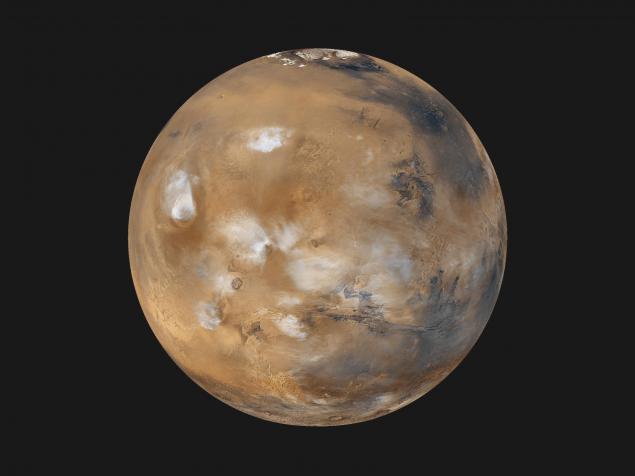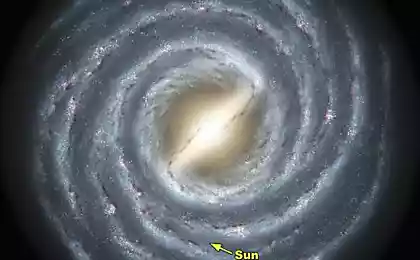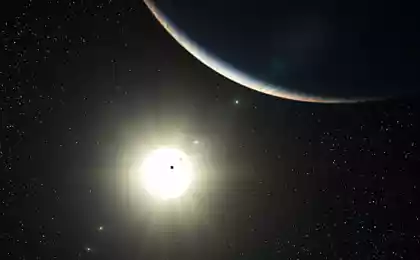663
Simulation of the Solar system to reveal mysteries of the planets

When we look at the Solar system, what can we say about how it was formed? We see the wreckage of the process of formation in asteroids, comets and other small bodies that accumulate on the outskirts of our system (and sometimes fly close to the Ground).
Are the orbits and sizes of the planets a natural byproduct of the formation or have any features that were born in the process of rare events? Scientists want to answer these questions to better understand how the Earth formed, and how it will affect earth-like planets around other stars.
For example, the new simulations showed that Mars is a rare planet. It may appear, but in special circumstances, if the parameters of the simulation were correct. Whether such assumptions or the need to conduct more research?
Search of answers to these questions helps us understand where not only Mars, but also our own planet. For astrobiologists, the Red planet is of particular interest because it has numerous evidence of water in the past.
The results of the Mars Rover "opportunity", "Spirit" and "Curiosity" on the surface of Mars showed that the planet has minerals that formed in the presence of water, for example, mineralized iron oxide known as hematite.
"The education of Mars — old mystery. Most previous studies like this, could not reproduce an object with the mass of Mars, says Rebecca Fisher, a doctoral student in geophysical Sciences at the University of Chicago, a leading research. — You can play Mars, but it works only in 5% of cases. If you spend only four simulations, you will not see his education".
The work of Fischer, entitled "Dynamics of terrestrial planets in numerous simulations the N-body" appeared in the journal Earth and Planetary Science Letters.
Jupiter and Saturn formed the first
Fisher, a geologist by training, is interested in how the Earth formed. Like other planets in the Solar system, Earth was formed from a cloud of gas and dust about 5 billion years ago. Over time, this cloud came together in the wreckage. The fragments collided and merged, eventually forming planets and moons that we see today.
Figuring out in what conditions would form the eight planets of our Solar system, however, is a huge problem. It requires the modeling of collisions over millions of years and taking into account such things as the orbits of the gas giants of course, Jupiter and Saturn, which affect the position of the planets of the inner Solar system.
Previous modeling of the formation of the Solar system were limited to a few approaches. To the last work mentioned, the total number of simulations was increased to 12 in 2009.
It is believed that Jupiter and Saturn formed before the inner Solar system, because they have a lot of gas inside. By analogy with the young Sun, these planets drew gas, floating in the immediate vicinity. The gas remained in the Solar system for a short time before the radiation of the Sun is not pushed him out of the Solar system, and therefore, the gas giants formed relatively quickly. They were able to keep the gas due to the powerful gravity.
For this reason, the model begins with the assumption that Jupiter and Saturn existed when the inner Solar system were still in its formative stages. The researchers conducted two series of 50 simulations — one with Jupiter and Saturn with the same eccentric orbits, as they have now, and one when Jupiter and Saturn had a more circular orbits.
"Usually, we form two to six of the planets of the inner Solar system in their simulations, says Fisher. We see something that looks like a Venus. With mercury harder. We see maybe one good analogue in all simulations. The fact that none of the simulations does not produce mercury, therefore, most likely, we err on the stage of the theory".
Fisher acknowledges that the results may tell scientists that the formation of Mars and mercury — unlikely event is possible, but rare. Or modeling can show the scientists that the assumptions they make regarding Solar system needs to be revised. These issues are to be addressed in future studies.
Construction Земли

In addition to the formation of planets, the researchers also studied how the presence of other planets influenced the formation of the Earth. For example, our planet comprises volatiles like water on its surface. Is it possible that the mass of Mars is influenced by the amount of water collected by the Earth? Modeling Fisher showed that the quantity of water on Earth, apparently, depends on Mars.
What else I noticed about Fisher is the fact that the orbits of Jupiter and Saturn greatly affected the amount of volatiles delivered to the inner Solar system, where the Land is situated. Water and some organic substances originated from the outer Solar system, possibly for the same reason that comets come from a hypothetical region called the Oort Cloud. This region is full of icy objects, which are from 5000 to 100 000. E. from Earth.
These icy objects remain on the outskirts of the Solar system, if the orbits of the gas giants do not push them closer to the Sun. Planets like the Earth, which is in the process of accretion of water, nitrogen and carbon (all important for life) is likely to largely depend on the material which is delivered to the gas giants.
Fisher found that early young circular orbits of Jupiter and Saturn enabled the gas giants to deliver more volatiles into the inner Solar system, which would be impossible with more eccentric orbits today.
The model showed several scenarios for orbits of Jupiter and Saturn, while formed the inner planets. Perhaps their orbits crossed or approached and receded from the Sun, but the main reason for this is not clear.
How rare is our Solar system?

Understanding how to assemble the Solar system, has important implications for life beyond Earth. If it is definitely rare for the formation of some planets, and then life needs to be less than expected. However, while scientists have been unable to replicate a model of the Solar system.
"There are lots of discussions about how to approach this, look at the Solar system as the most likely outcome, or to start from conditions that could produce the Solar system. Currently there is no configuration that would produce a Solar system in most cases."
In further studies, Fischer will study how the formation of the Solar system could affect the Earth. For the planets, which are collected in the simulation, it will calculate the distribution of incoming material between the crust and mantle of the Earth, the latter of which depends on the temperature and pressure in the Earth's core.
These simulations will help to accurately determine the temperature of the Earth's core, which is still unknown. Active the surface of the Earth, volcanoes and earthquakes are sometimes cited as the cause of life, because they provide organisms with energy and change.
Although the presence of Mars may be a rarity in our Solar system, astrobiologists consider it a success. Mars exploration helps to understand the different conditions under which could arise in life, even if we are not sure if she was ever on Mars.
Source: hi-news.ru
U.S. dealers seeking the closure of the auto shop Tesla because of its high sales
Electric print on a 3D printer in front of the spectators























